When Is It Time to Stop Using a Sleep Sack?

- Sleep sacks are a great alternative and safe next step for keeping babies warm at night once they have outgrown the swaddling phase.
- Sleep sacks are a safe alternative to loose blankets in a baby’s crib, particularly up until they are a year old.
- Deciding when to stop using a sleep sack will be different for every child, but as long as you are using the right size sack for your child, they can be used safely into toddlerhood.
The swaddling period didn’t last very long with our older son. Whether it was a do-it-yourself swaddle technique with a large muslin or a specialized swaddle blanket with velcro tabs, our little escape artist found his way out of it. He would pump his tiny fist in the air to show us he was victorious, yet again.
It was time for a sleep sack: a brilliant invention to keep babies warm and cozy at night once they have moved on from swaddles. More importantly, they’re also safe, particularly in the first year when the risk of SIDS is highest. Once you’ve found a lovely sack for your baby, the next question becomes, when to stop using a sleep sack. Luckily, the answer is not too complicated.
Sleep Sacks: Are They Really Necessary?
A sleep sack is a wearable blanket, like a baby sleeping bag, with sleeveless armholes. They come in a variety of seasonal weights for you to choose from, depending on the climate you live in. You can find them in just about every fabric, texture, pattern, and design imaginable, as well as at every price point.
Sleep sacks come in a huge array of sizes for infants and toddlers of different ages, heights, and weights (and you can find our list of the best sleep sacks here). It’s important to read the label to make sure that you’re choosing the appropriate one for your child.
When can you start to use a sleep sack?
Sleep sacks are generally the next step after you stop using a swaddle with your newborn which help keep them from startling awake. Once your baby starts rolling onto their stomach, experts recommend that you stop swaddling your baby. For most babies this is between two and four months.
If your baby rolls onto their stomach, they need to have their arms free to push themselves up or to roll onto their backs. Unlike a swaddling blanket, a sleeveless sleep sack allows your baby to do that.
Are sleep sacks really safer than baby blankets?
The American Academy of Pediatrics (AAP) advises parents not to keep any loose fabrics, blankets, soft toys, or other plush sleep accessories in a child’s crib, particularly in the first year of life. Any type of receiving blanket, pillow or toy in your baby’s bed is a suffocation hazard.
The AAP recommends always putting a baby to sleep on their back. They suggest wearable blankets as a safer alternative to a loose blanket especially in the first twelve months. Both reduce the risk of Sudden Infant Death Syndrome (SIDS). Another benefit of sleep sacks is that they also protect your baby’s legs from crib-related injuries, like getting caught in the crib bars.
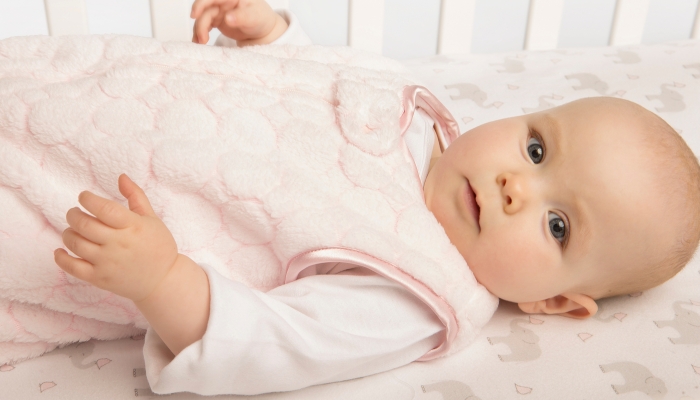
Will my baby get too hot sleeping in a sleep sack?
How you dress your baby for sleep will depend on your climate and the TOG (thermal overall grade) of the sleep sack that you choose. Sleep sacks come in a variety of thicknesses to help you synchronise with the seasons.
According to the experts at AAP’s parenting website one extra layer more than you are wearing in the same environment will be comfortable for your infants and toddlers. Read the labels of sleep sacks carefully to make sure you have an appropriate one for your conditions.
Things to Consider in Choosing the Right Sleep Sack
When choosing a baby sleep sack, consider the following:
Your baby’s size vs. their age
All sleep sacks will come with suggested age and weight ranges. What matters more in choosing a safe sleep sack than your child’s age, however, is their actual size and weight. This should correspond with the suggested height and weight for a particular sleep sack.
Although there are many things that most parents may buy a few sizes bigger for their child to “grow into,” a baby sleep sack should not be one of them.
A sleep sack should fit your baby comfortably, allowing them to kick their legs within it. It should fit them under the arms so that they don’t slip down inside of it. If it is too big and the fabric could cover their heads, then the sleep sack poses the same suffocation risk as blankets do.
The sleep sack TOG – Thermal Overall Grade
One thing that you’ll see most sleep sacks state on their labels is their TOG, which is basically a measure of their warmth.
A TOG rating of .5 to 2 is a lighter weight wearable blanket for spring and summer, depending on where you live. While a rating of 2.5 indicates a heavier blanket for autumn and winter.
Your climate and whether or not you use air conditioning should help you determine what level of warmth you need. Remember that your baby will also be wearing pajamas when they use a sleep sack, so you don’t want to overheat them.
Coziness
You also want to find a sleep sack that is cozy and snuggly for your little ones. Part of what makes sleep sacks a great sleep aide is that babies love the security and comfort of wearing them for sleep.
Getting into a bedtime routine is one of the most important sleep tips for moms and new parents who are struggling with newborn sleep patterns. Putting your baby into a cozy sleep sack as part of the bedtime routine will create a positive sleep association as your baby learns to sleep independently.
If your baby is fighting sleep, including a cozy sleep sack in your bedtime routine to create a comfortable sleep space may be worth a try.
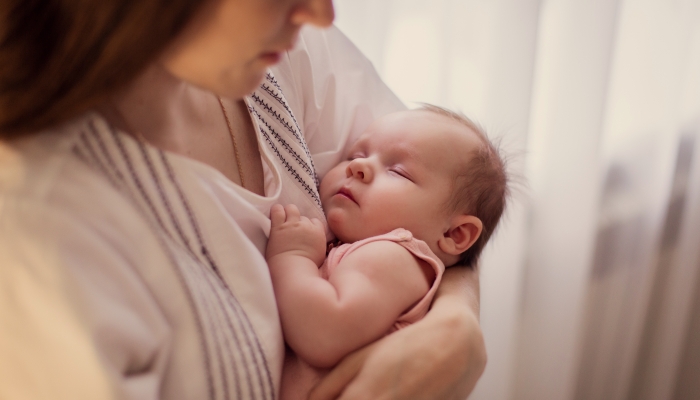
When Should You Stop Using a Sleep Sack?
As with swaddling, there will come a time when your kids will want to transition out of a sleep sack. The time to stop using the sleep sack again depends more on size than a set age. As long as the current sleep sack you are using for your child still fits comfortably, your little one can continue to use it for sleeping.
For most children, this period can last up until around two years old. Extra large toddler sleep sacks generally accommodate an average two-year-old. Your little one, however, may want to abandon the sleep sack well before then. Once your baby is crawling, they might find the limited mobility of the sleep sack in the crib too restrictive and they may start resisting putting it on at bedtime.
The AAP recommends that no loose blankets be used in an infant bed for your child’s sleep in the first twelve months when the chance of SIDS is highest. After that, the risk is reduced most kids are then mobile and can roll in any direction. Using a sleep sack until that time is the safest option.
Sleep Sack to Blanket: Tips to Help the Transition
When it’s time to transition out of sleep sack, try these tips:
Find the right one
Look for a smaller, plain, blanket made of a breathable muslin or cotton. It should not have any buttons or accessories that could pose a choking risk. It should not be weighted. Your child should be able to manipulate it easily by themselves.
Make it special
Safely introduce the “special blanket” to your little one when they’re awake, explain what it’s for, and reassure yourself that they can maneuver it independently. Try using it at nap time.
Timing
Think about starting the transition in the warmer spring and summer months when you won’t have to worry about your toddler getting too cold if they kick it off.
Dress your toddler in layers
Parents should assume that the blanket will not stay on toddlers all night. Dress your toddler as if they won’t be using a blanket, for example, in footie pajamas with a onesie or vest underneath.
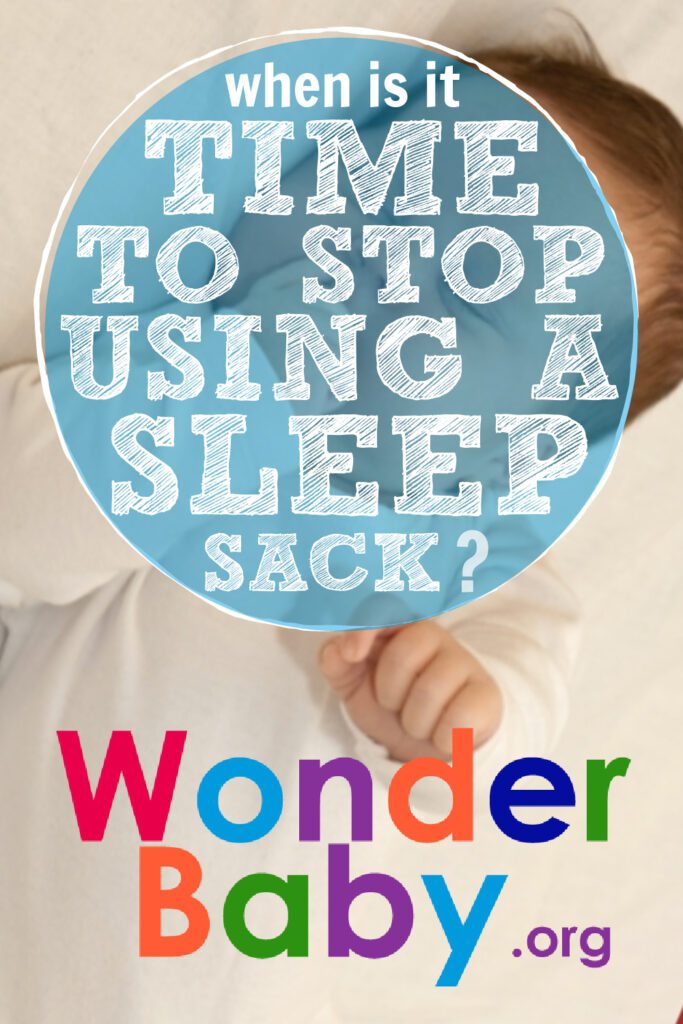
Related Posts
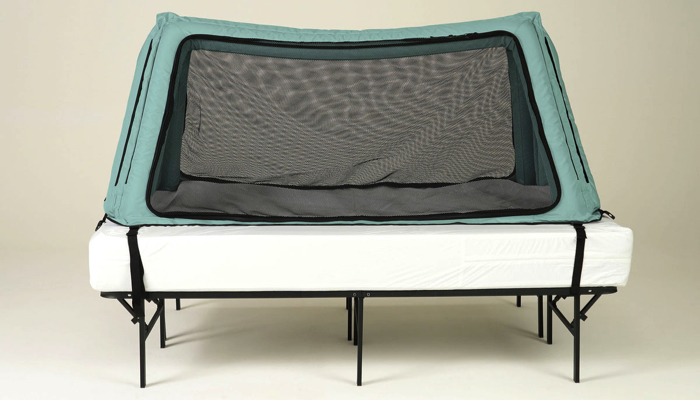
Sleep, Special Needs
Safe Place Bedding Travel Bed Review
Traveling with a special needs child can be stressful! Having a safe, durable, and easy to use travel bed can make traveling so much easier!
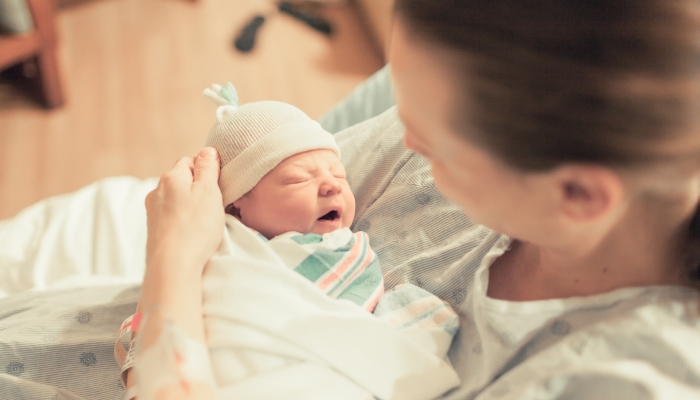
Sleep, Special Needs
Sleep Regimen for Premature Babies: Special Considerations
It can take premature babies much longer than their full-term peers to sleep for long stretches. A preemie sleep schedule may encourage better sleep.
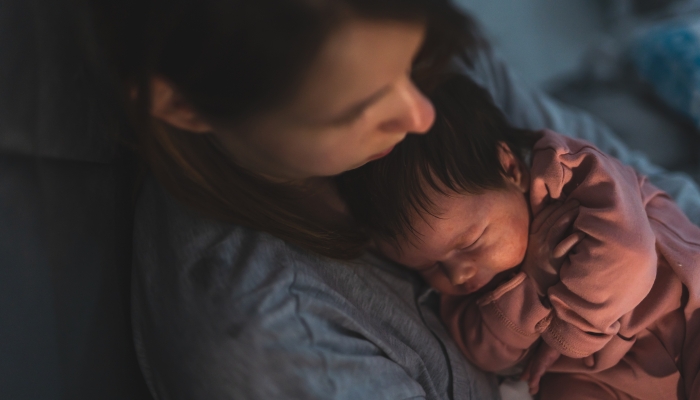
Sleep
Mastering the Bedtime Routine: 3 Tips for a Peaceful Night’s Sleep
From around six weeks, a newborn bedtime routine can help your baby learn the difference between day and night and prepare for a restful night’s sleep.